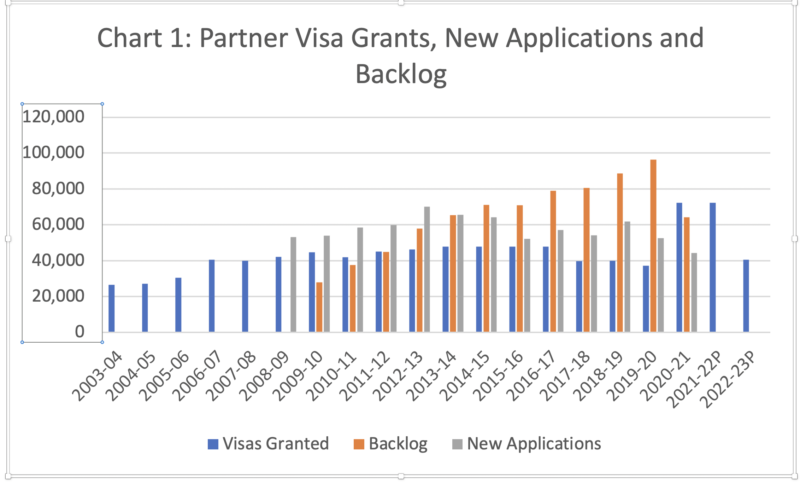Partner visas another Dutton scandal
June 29, 2022
_Under Dutton, the Department of Home Affairs just ignored the law.
_
In 2018, I wrote about one of Duttons lesser known scandals his action to egregiously limit the number of partner visas.
In both 1989 and in 1996-7, Parliament voted to ensure partner visa applications (more specifically spouse visa applications) must be managed on a demand driven basis.
This recognised that Australian citizens and permanent residents have the right to marry whomever they choose, including same-sex partners, and to live in Australia with their chosen partner.
Some Parliamentarians argued it would be unconscionable for the Government to place limits on the number of partner visas that were issued in any one year.
Yet that is precisely what the Government did until 2020-21. It applied an illegal limit on the number of partner visas that could be issued even though the annual application rate was well above the limit it applied (see Chart 1).

This led to the partner visa application backlog continuing to grow, peaking at just under 100,000 in 2019-20 and over 100,000 when partner visa applications at the AAT are included. Processing times blew out to well over 12 months and in many instances, over two years.
In 2020-21, the Government suddenly recognised the illegality of its actions and allocated a record 72,000 places for partner visas and a similar level in 2021-22.
This led to a sharp fall in the backlog such that in the 2022-23 program, the Government has allocated only 40,500 places for partner visas and shifted the balance to the skill stream.
The Government has also started using the phrase demand-driven. Indeed, in describing the partner allocation in 2022-23, the Department explicitly and proudly says partner visas are Demand driven: estimate, not subject to a ceiling.
No embarrassment or contrition about the Departments past behaviour in not managing partner visas on a demand driven basis.
But what brought about the change of heart?
I suspect two things happened.
Secondly, he wrote to the ANAO recommending an external audit of partner visa processing to address, in particular, whether the Government had acted illegally in limiting the number of partner visa places.
This resulted in an extensive exchange of correspondence between Mr Hill and the Auditor-General, Grant Hehir.
The Auditor-General also discussed the matter with the Department of Home Affairs.
This appears to have broken the log-jam.
It is likely the Department at last sought legal advice on whether it has the right to limit the number of partner places and received the same emphatic advice I received in 1996 when the Howard Government asked me to limit the number of partner places.
The legal advice is unequivocal. Spouse visa applications must be managed on a demand driven basis. The Howard Government at least had the decency to try and change the law on this but was unsuccessful. Under Dutton, the Department just ignored the law.
It used administrative (and unlawful) tricks to limit the number of partner visas granted until it realised the illegality of its actions.
Hence the dramatic increase in the allocation for partner visas in 2021-22 and 2022-23.
It is likely the ANAO audit will still proceed.
It will find that the Department, and in particular under Peter Dutton, acted illegally in limiting the number of partner visa places to an extraordinary degree.
Will the Department and Peter Dutton then apologise for their illegal actions?
I doubt it.

